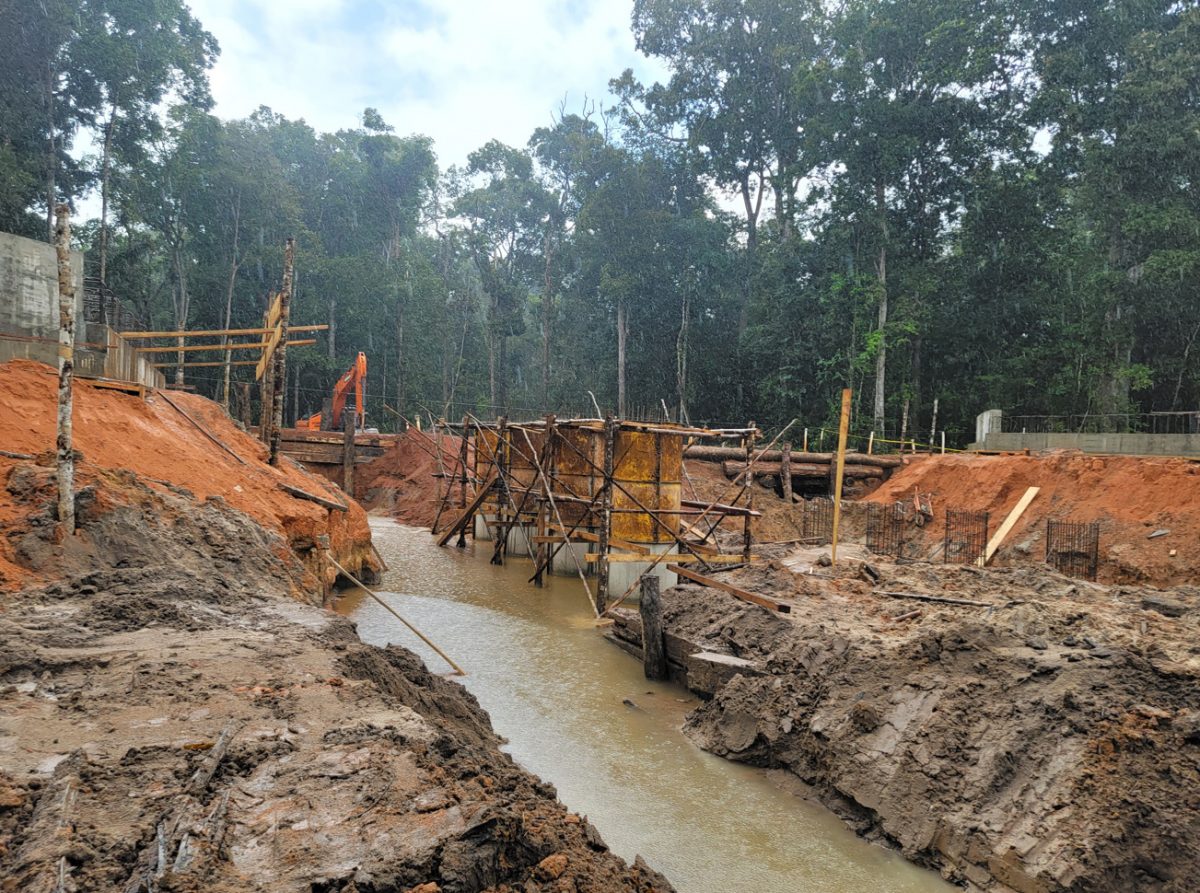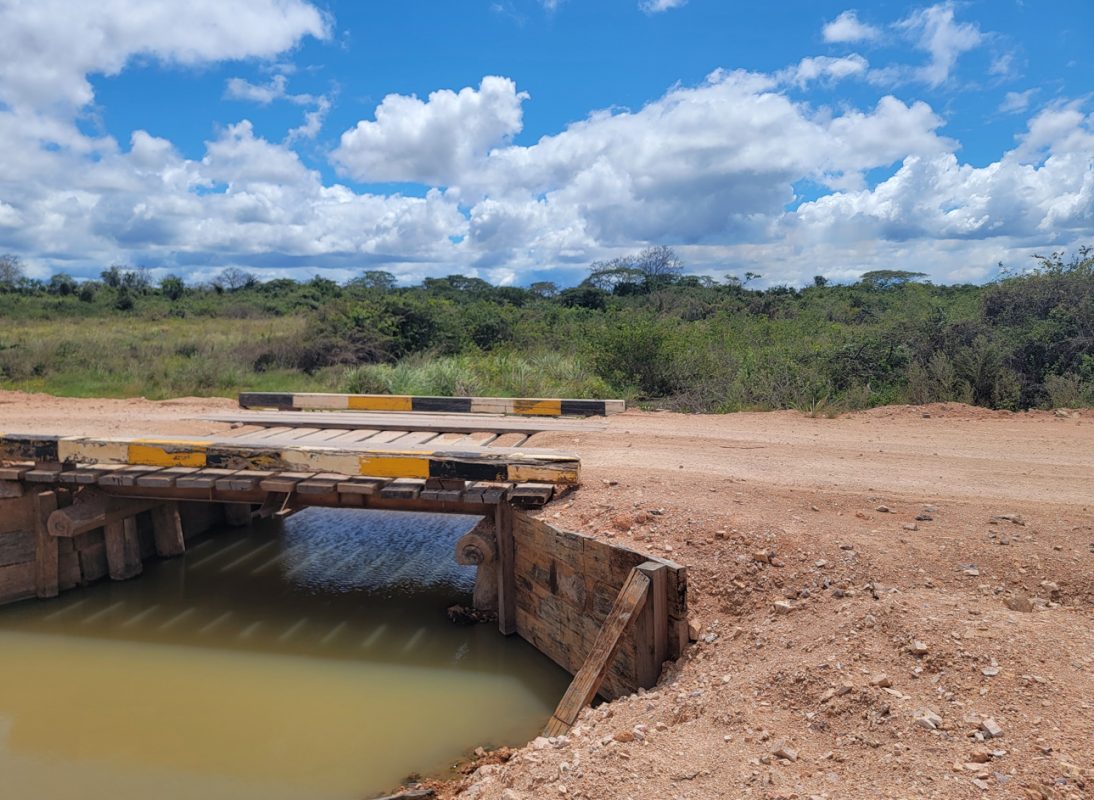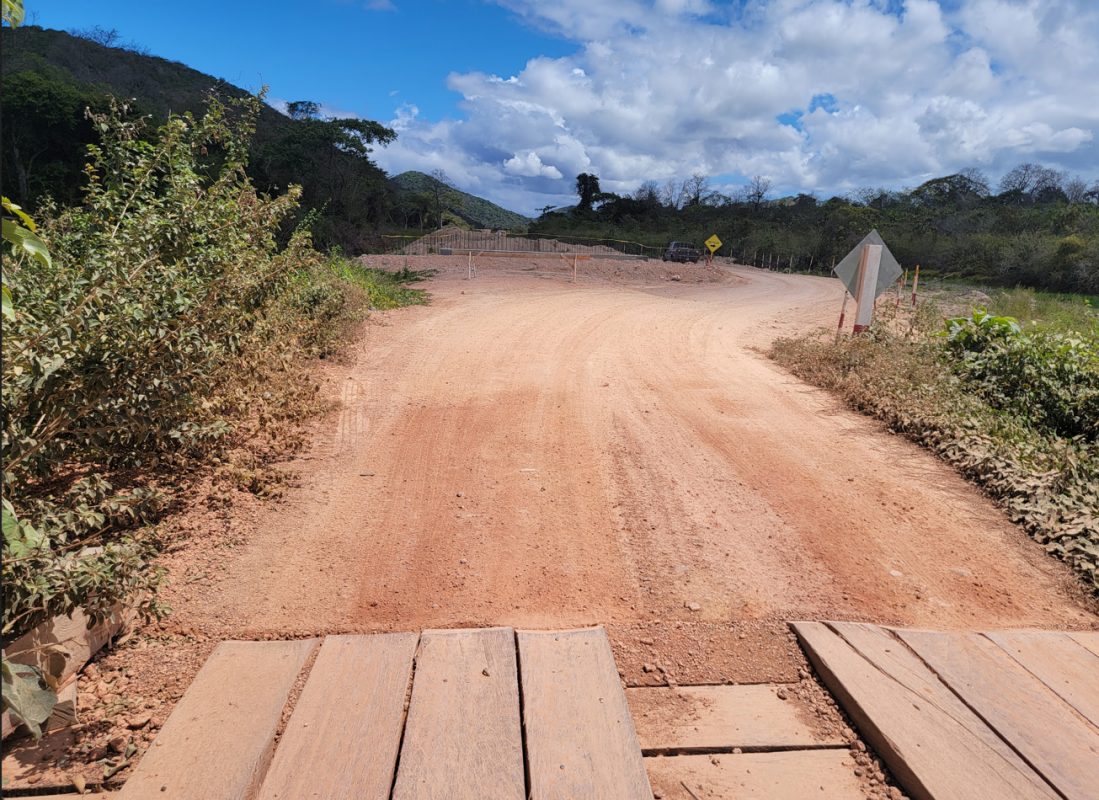Thirty-six concrete bridges are currently under construction between Kurukupari and Lethem – a project which the Ministry of Public Works (MoPW) says will improve travel on an important thoroughfare in Guyana. However, some members of the public have raised concerns over flow alterations occurring in and outside a protected area as a result of the project and the impact it might have on fishes.
Contracts for the construction of the bridges were signed in April last year with initial works commencing during the latter part of last year. The entire project has been estimated to last for eighteen months, but according to the Ministry, there has already been several delays due to unpredictable weather patterns and finalization of foundation designs. However, it is expected that the first phase of the project will be completed within eight to twelve months.
Since announcing the project, the Ministry provided several updates but the plan to alter the flow of several creeks was never revealed. It was only after construction began that persons who traverse the Lethem to Linden highway noticed that the bridges were being built several feet away from the creeks along that route.
Even more surprising was that flow alterations were occurring in the Iwokrama International Rainforest Centre – a protected area in the country.
“What will be the effects of these creek diversions on fishes and land?” a leader from the North Rupununi who spoke to the Sunday Stabroek on the condition of anonymity questioned. “Did they do an assessment or hold meetings? Are we, the people, going to be affected? The fishes that we depend on? If they are doing this in a protected area, do they not need to tell us?” he further questioned.
The leader explicitly stated that he not against any project that will improve the lives of hinterland residents but says he feel that the ministry is wrong for not disclosing such a critical detail of the project. He complained that the ministry has misled the public by claiming that they are upgrading the timber bridges when they are constructing new ones where there are no creeks or rivers.
“When they say they upgrading the bridges, we think they gone just bruk up the old one and rebuild. That is what we understand and so if we do not know what is going on, we will worry. People here [in the North Rupununi] still depend on the creeks and rivers. We do not know how we will be affected and if these creeks will change the entire course and if it will have permanent impacts,” he commented.
He added that
In February, the Sunday Stabroek visited several bridge construction sites between Iwokrama and the North Rupununi to confirm the statements of the leader and several other concerned North Rupununi residents. During the visit, it was observed that contractors are indeed building the concrete bridges several feet away from the location of the creeks. The timber bridges are still in place but excavation to change the course of the creeks towards the direction of the new bridges has already begun in several areas.
One of the contractors, who did not want to be named, told the Sunday Stabroek during the time of the visit that once the new bridges are complete, a large area of the creeks will be filled with gravel. When contacted, a source from the MoPW told the Sunday Stabroek recently that the flow alterations are not a big issue because most of the creeks are seasonally filled, and the diversions are not significant to impact wildlife or the environment. Apart from changing the location of the bridges from a “strictly engineering point of view,” he said, it was done to ensure a free flow of traffic during construction while keeping road users safe as well as fast-tracking works.
He explained that there was an option to construct timber bypasses at the creeks but this would’ve been harder to maintain than the earthen bypass option that was approved instead.
“Changing the bridge location is not going to affect the geology of the area. It is not going to affect wildlife or the environment. It was a strict engineering decision to get the work done as fast as possible because of the difficulty of working in those areas,” he explained.
When asked if an assessment was done to conclude that the flow alterations will not have any effect on wildlife or the environment, he said one was conducted but he is yet to access the report.
Dr Raquel Thomas-Ceasar recently declined to comment on the issue on behalf of the Iwokrama International Centre but stated that the centre is working along with the ministry and the Environmental Protection Agency to monitor the impacts of the project. She denied that Iwokrama did assessments of potential impacts as was recently indicated to the Sunday Stabroek by the Executive Director of the EPA, Khemraj Parsram, emphasizing that the project is strictly the Ministry of Public Works’ and that it was the mandate of the EPA to do assessments.
When he spoke to this news agency, Parsram had assured that the alterations of creek flow would not be, so the EPA did not conduct any assessment, but that Iwokrama had done one. However, he says, the agency makes frequent visits to project sites to ensure that contractors are working along with the approved designs and regulations.
The Sunday Stabroek was unable to access the assessment that has been claimed to exist.








